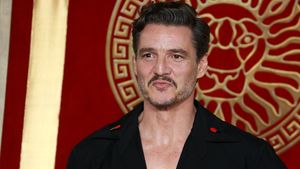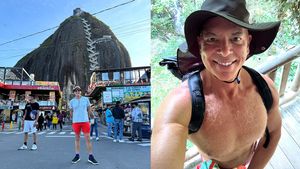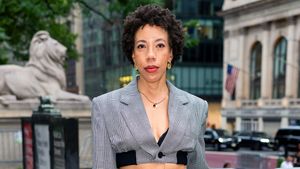We all know how rare it is for Congress to take meaningful action, but wouldn't you think protecting the lives of children could unite the parties? You'd be wrong.
For decades, the industry of residential schools, camps, and wilderness programs that claim to treat troubled teens -- including kids considered "troubled" simply because they're LGBT -- has operated with less regulation and oversight than nail salons. While Congress fails, year after year, to pass sensible legislation to change that, thousands of children have been abused by these programs. Hundreds are reported to have died.
Way back in 2007 there were congressional hearings on what's known as the troubled-teen industry, along with a damning investigation by the U.S. Government Accountability Office. The GAO reported that in just one year (2005), there were 1,619 employees of these programs in 33 states involved in incidents of abuse. And those were only the reported incidents.
It's no wonder that a guiding principle of these programs is to deprive youth of all contact with family, friends, and the outside world, because we've heard from survivors forced to endure torture techniques that include food and water deprivation, physical abuse (beatings, electric shocks, hard labor), and weeks of solitary confinement in windowless cells. We've also heard from devastated parents whose children died in these programs. The nonprofit organization Survivors of Institutional Abuse reports the death of more than 300 people linked to these programs.
When Bob Bacon sent his 16-year-old son to a program in Utah, he didn't know it wasn't regulated. Even after interviewing the owners, Bob thought this was a place where his son Aaron, a poet, would be cared for by staff who were experts at helping kids struggling with drugs and dealing with social pressure. They told him Aaron would get to explore the beauties of Utah while writing in his journal each night. Thirty days later, Aaron was dead.
There was no poetry in Aaron's journal, just horrific firsthand accounts of torture. For two weeks he was deprived of any food, all while hiking up to 10 miles a day. During the freezing nights in the wilderness, he had only a thin blanket to cover him; for five nights he had nothing at all. By the 10th day he had lost 20 percent of his body weight and control of all bodily functions, but the staff refused to provide any medical treatment. When Bob saw his son's bruised, battered, and skeletal body, he couldn't believe it was him. He told us, "My wife and I will never escape our decision to send our gifted 16-year-old son to his death."
During his senior year in high school, David Wernsman -- whose story is depicted in the powerful 2014 documentary Kidnapped for Christ -- was sent by his parents to a residential treatment program. He told us the following:
"When I was 17, two large men woke me up before dawn, tied a belt around my waist and forced me out of my home. I was taken to a dumping ground -- guarded by men with guns -- for kids whose families didn't know how to solve their child's issue. In my case, it was the fact that I'm gay. The program was an endless nightmare of torture, including public beatings and humiliation, hard labor, and sometimes solitary confinement in a windowless cell where we relieved ourselves in a bucket."
Every day at the Los Angeles LGBT Center, we see the consequences of parents sending their LGBT kids to these programs to be "cured" or because they presume their children's sexual orientation or gender identity must mean they're troubled. Most suffer lasting trauma and some depend on us for a safe place to live because they end up homeless.
Joined by the nonprofit organization Survivors of Institutional Abuse and with the support of a growing list of organizations, businesses and individuals, the center has launched the national Campaign to Protect Youth from Institutional Abuse to finally regulate this rogue industry. In California we're cosponsoring landmark legislation introduced by Sen. Ricardo Lara to require these programs to be regulated by the state Department of Social Services, with no exemption for faith-based groups. In fact, the bill will get its first hearing in the state Senate Tuesday, when the Senate Committee on Human Services meets.
We expect California's legislation to set an example for the rest of the country, but state legislation isn't enough. When the abuses of these organizations are exposed in the media, it's common for them to close and reopen in another state, often under a different name. And parents frequently send kids to programs outside their home state. That's why we absolutely must have federal legislation.
Though we know it won't be easy, and though previous attempts have failed, LGBT groups have never been a part of the movement to regulate this industry. Now the world's largest LGBT organization is dedicated to building a broad coalition, partnered with allies in Congress, to finally bring sensible regulation to this industry. Nationally, we've secured commitments from U.S. Reps. Adam Schiff and Bobby Scott, and we're working to identify other cosponsors to build on the work started by former U.S. Rep. George Miller and finally pass critically needed federal legislation.
Please join our campaign, sign our petition at PYIA.org, and help us protect youth -- whatever their sexual orientation or gender identity -- from abuse.
LORRI L. JEAN is the chief executive officer of the Los Angeles LGBT Center.













































































